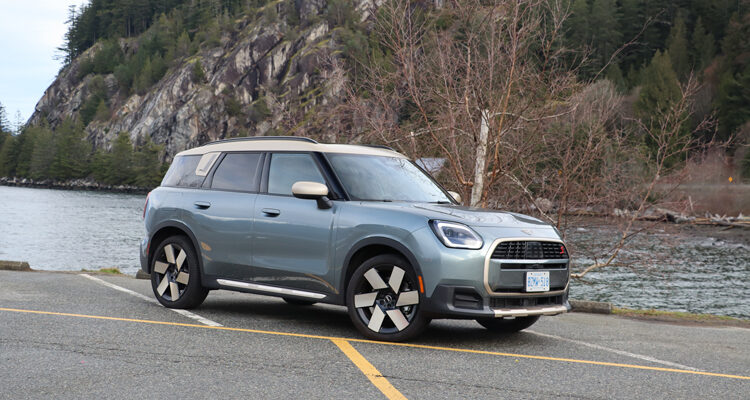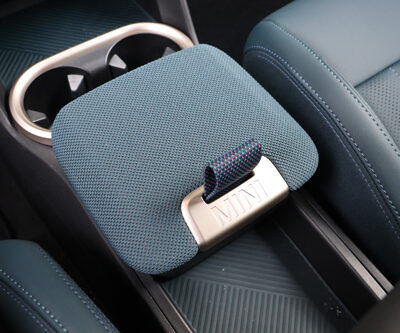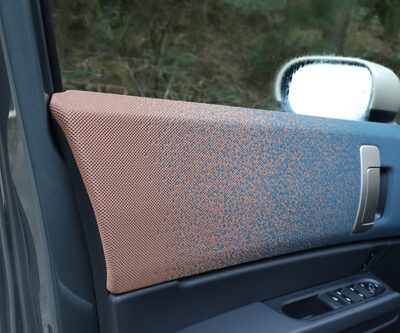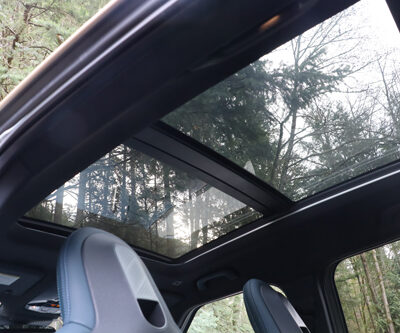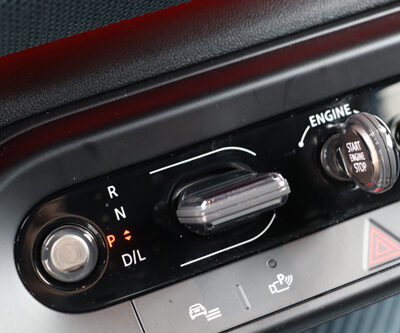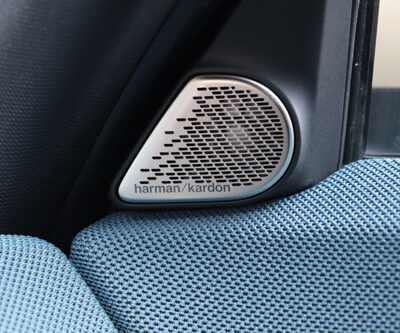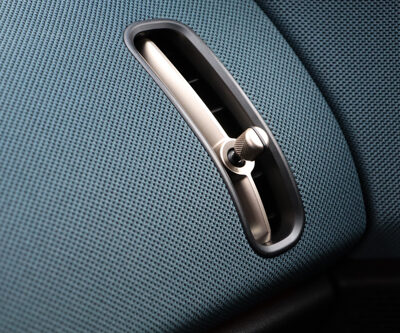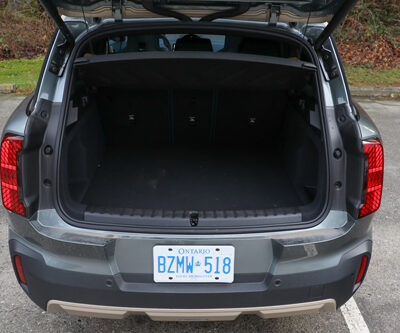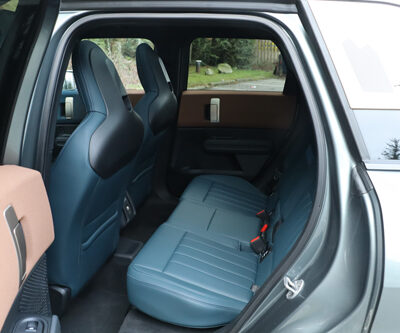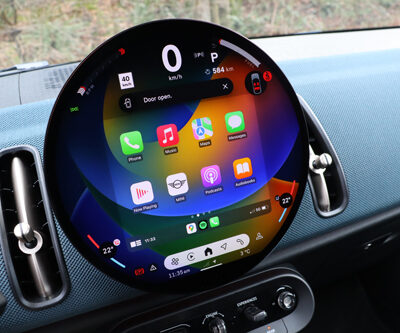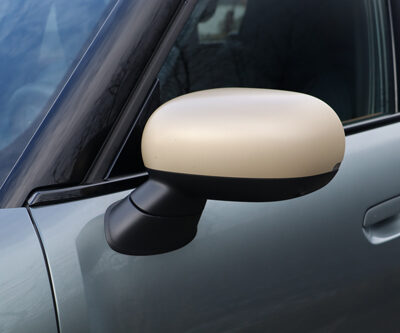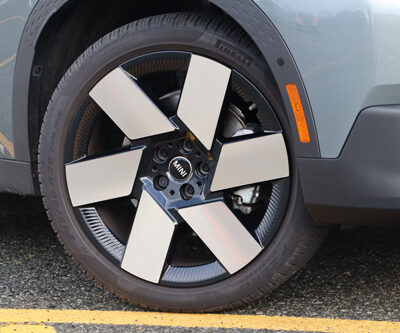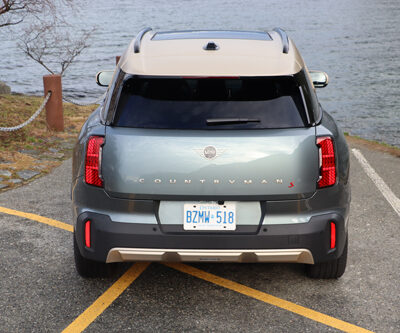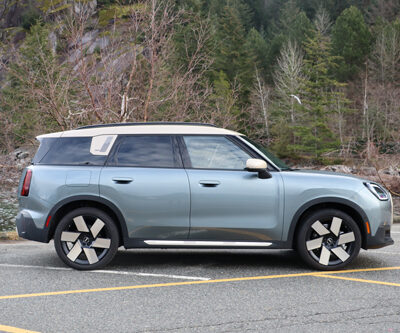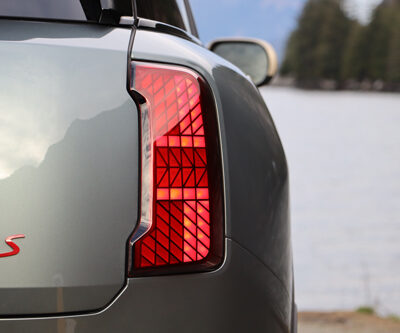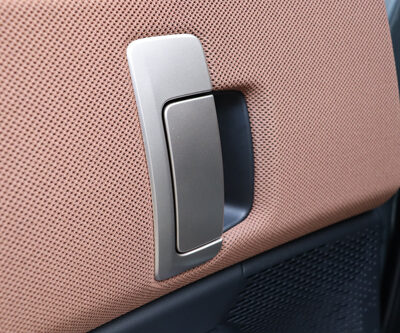“Mini”. If there’s a brand name less befitting of the car to which it’s attached, I don’t know it. Maybe there’s some el cheapo Chinese EV hatch out there with 40 horsepower called “Lightning Breeze” or something to that effect. Past that, though, the new-for-25 Countryman S ALL4 is the farthest away the brand’s ever come from its own nomenclature.
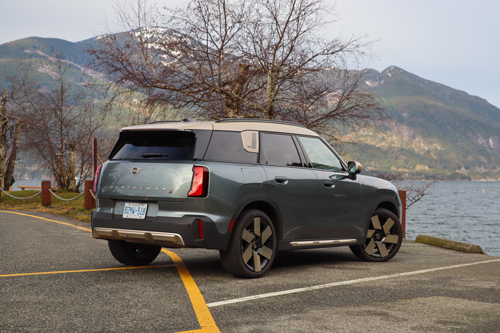
The Countryman is a compact crossover that’s bigger than it’s ever been (it may have been considered a “subcompact crossover” at some point, but that point is long past) but before you get all high-and-Mini on me, I will allow for a few concessions.
The Countryman maintains many of the quintessential bits that we’ve always loved about Mini. Big as it is, there’s no denying that style-wise this car comes from the Mini brand, there’s still punchy turbocharged power and wait until you see the interior.
Powertrain: Unlike the standard Cooper hatchback, the Countryman S (base MSRP: $45,990) is the entry-level model; it doesn’t get the “C” version its smaller sibling gets. You need to upgrade to the John Cooper Works version (MSRP: $56,290) for more power and a sport-tuned chassis. Still; brandishing a 2.0-litre turbocharged four-cylinder good for 241 horsepower and 295 pound-feet of torque, this biggest of Minis is a properly zippy machine. All that power is transferred to the wheels via a 7-speed automatic transmission.
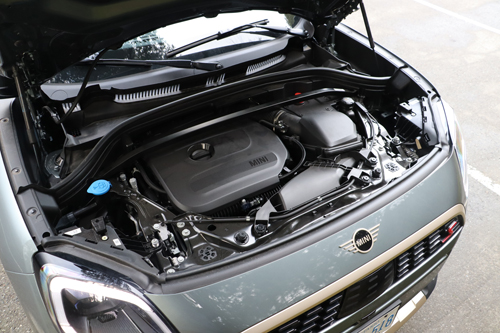
Exterior: The upright windshield and rear window are all Mini, as is the two-tone paintjob and oval grille. There are some great exterior details as well; the six-spoke wheels are ultramodern and the way the top of the rear door pillar matches the contrast-colour roof is a cool touch. If you squint, you can also make out a Union Jack motif within the taillights, which is a nod to the previous generation of the Countryman.
The upright windscreen and rear window also suggests a pretty tall roof and good headroom and indeed, there is a surprising amount in here even with my tester’s optional full-length panoramic sunroof. The rear seats are well padded but just a little flat (making the seatbacks easier to fold flat and child’s seats easier to install), but there’s pretty good space in the back seat overall. In addition to looking for my daughter’s impressions of the funky interior, I wanted to see if a Mini of any stripe could be used as a family vehicle. Based on space alone, a family of three – or maybe, maybe – even four, would do just fine.
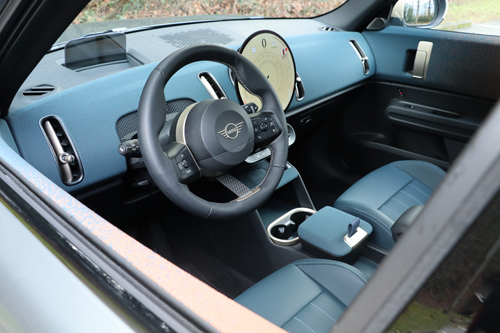
Interior: Interesting orange-blue tie-dye style cloth inserts can be found on the doors, dash and seats, the lid for the (optional) central storage bin – well-suited for sunglasses or wallets — is opened via a fabric pull and the heads-up display is reflected off a small panel that emerges from behind the wheel. That last one reminds me of the tiny plastic wind deflectors seen on classic open-top racing sports cars. You can display your speed there, so it acts as a more traditional gauge cluster if you don’t want to have to look left to check your speed on the central screen.
Infotainment: The way the central display changes style when you switch drive modes (which is also accompanied by a little soundbite; a “woo-hoo!” pops when you select “Go Kart” mode, for example) is cool. What I like less is how they have to stuff so much on a round surface, meaning some small buttons for the climate temp, wireless Apple CarPlay activation and so on. By the way: while the sporty Go Kart drive mode is the mode I spent the most time in, the retro look to the “Timeless” mode is the one for me. It looks great in a somewhat steampunky way, and is actually the easiest to read thanks to the colours and font sizes it employs. Alas, you can’t pair just any display with any drive mode.
Speaking of traditional buttons and switches: it’s not like Mini is completely adverse to offering them, either. Just below the main display, we find a cool toggle-style electronic gear selector, as well as a smaller one for drive modes (called “Experiences” here), a volume knob as well as a twistable toggle acting as an engine start/stop.
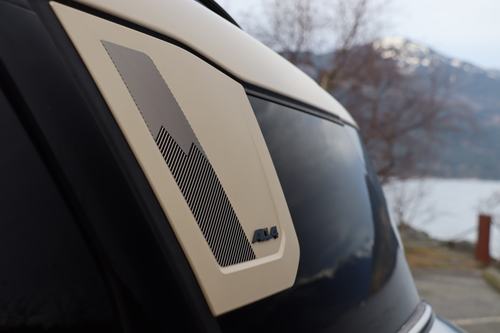
Drive: There’s no manual mode and while that is somewhat disappointing, the Countryman is overall such a fun-to-drive car you tend to forget about that. The steering does well to fit with the “Go Kart” theme as it is direct and responsive. The wheelbase is short and there are almost no overhangs, so the turning radius is tiny, making for more ease-of-use around town. Even though a short wheelbase can mean a bouncy ride, that’s not the case here as the suspension is well-tuned to handle anything most drivers are going to throw at it.
Conclusion: So yeah; it may have outgrown what’s considered the OED’s definition of “Mini” but at its heart, there’s lots to like here. It makes great use of the space it has (another Mini staple, that), the engine offers just the right amount of power and the chassis and steering proves a zippy affair that doesn’t get too upset when the goings get bumper. It’s a great package, even if you’d have to pay a premium price at the post office to ship it.
2025 Mini Countryman S ALL4
Price as tested: $53,890.00
Freight: $2,245.00
Configuration: Front engine/all-wheel-drive
Power/torque: 241 horsepower/ 295 lb-ft of torque
Fuel (capacity): Premium (54 L)
Combined fuel ratings (L/100 km): 8.7L/100 km
Observed fuel economy (L/100 km): 9.3 L/100 km
Warranties: 4 years/80,000 km (basic)
Competitors: Audi Q3, BMW X1, Mercedes-Benz GLB 250, Volvo XC40



